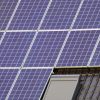
Reasons Behind the Growth of Solar Panel Installations in the UK and Ireland
In recent years, solar energy has emerged as a major contributor to the renewable energy mix in both the United Kingdom and Ireland. Once considered niche or overly dependent on subsidies, solar photovoltaic (PV) systems are now becoming mainstream. A combination of technological, economic, environmental, and political factors has driven this significant rise in installations across residential, commercial, and agricultural sectors.
This guide explores the key reasons behind the growing adoption of solar panels in the UK and Ireland and why this trend is expected to continue accelerating in the future.
1. Falling Costs of Solar Technology
One of the most compelling reasons for the increased popularity of solar panels is the dramatic drop in installation and equipment costs over the past decade. According to the International Renewable Energy Agency (IRENA), the global cost of solar PV has decreased by over 80% since 2010.
This price reduction has been mirrored in the UK and Ireland. Panels are more efficient and cheaper to produce, and economies of scale—driven by global demand, particularly from countries like China and Germany—have made solar a far more accessible technology. For homeowners and businesses, the lower upfront investment makes solar a financially viable option, with faster return on investment (ROI).
2. Government Incentives and Policy Support
UK
The UK has long supported renewable energy through a variety of policies and incentives. Although the Feed-in Tariff (FiT) scheme ended in 2019, it provided a strong foundation for early adoption of solar technology. More recently, the Smart Export Guarantee (SEG) allows small-scale generators to sell unused electricity back to the grid, offering ongoing returns for solar owners.
Local councils and devolved governments have also introduced grants and support programs, particularly in Scotland and Wales, to encourage solar uptake in homes, schools, and public buildings.
Ireland
Ireland has historically lagged behind the UK in solar adoption, largely due to policy delays. However, that changed significantly after 2022 with the introduction of the Micro-generation Support Scheme (MSS) and Clean Export Guarantee (CEG). These policies allow homeowners and small businesses to receive payments for excess electricity exported to the national grid. Combined with SEAI (Sustainable Energy Authority of Ireland) grants of up to €2,100 for solar PV panel installations in Ireland, these programs have sparked a rapid rise in installations.
3. Rising Energy Costs
The energy crisis of 2021–2023—driven by supply chain disruptions, inflation, and the war in Ukraine—resulted in a dramatic rise in gas and electricity prices across Europe. In both the UK and Ireland, households and businesses faced steep energy bills, prompting a surge in interest in alternative sources of energy.
Solar panels provide a measure of energy independence. By generating their own electricity, users can reduce their reliance on volatile fossil fuel markets. Even without full battery storage solutions, solar users can offset daytime usage and lower their bills significantly.
4. Environmental Awareness and Climate Commitments
Public concern over climate change has reached new heights in recent years. Extreme weather events, rising sea levels, and biodiversity loss have spurred demand for cleaner, greener energy solutions. Solar PV systems have a clear environmental benefit: they generate electricity without producing carbon emissions or harmful pollutants.
Both the UK and Ireland have committed to legally binding climate targets:
• The UK aims to achieve net zero emissions by 2050, with interim targets such as a 68% reduction in emissions by 2030.
• Ireland has pledged to reduce greenhouse gas emissions by 51% by 2030 and reach net zero by 2050.
Solar energy plays a crucial role in meeting these goals. For eco-conscious consumers and businesses, installing solar panels is a direct and visible way to contribute to environmental sustainability.
5. Advances in Battery Storage and Smart Energy Systems
The effectiveness of solar installations has improved significantly with the development of battery storage technologies. Systems like the Tesla Powerwall and other lithium-ion batteries allow users to store excess solar energy generated during the day for use at night or during cloudy periods.
In addition, smart meters and home energy management systems enable more efficient energy use and real-time monitoring. These innovations make solar systems more flexible and efficient, increasing their appeal to both residential and commercial customers.
In Ireland, the rollout of smart meters and the integration of solar with heat pumps and electric vehicles (EVs) has made solar a key part of broader home energy retrofitting strategies according to NFC Energy.
6. Planning and Regulation Improvements
Planning laws have become more solar-friendly in both nations. In the UK, most domestic solar panel installations fall under Permitted Development Rights, meaning they don’t require formal planning permission unless the property is listed or in a conservation area.
In Ireland, new regulations introduced in 2022 removed the planning permission requirement for rooftop solar panels on homes, farms, schools, and certain commercial buildings—provided they meet specified conditions. This has removed one of the most significant barriers to solar uptake in rural and urban areas alike.
7. Technological Integration with Electric Vehicles and Heat Pumps
Solar panels are increasingly seen not just as standalone power sources but as part of a larger clean energy ecosystem. In both the UK and Ireland, the adoption of electric vehicles (EVs) and heat pumps is rising sharply. When paired with solar panels, these technologies allow households to generate, store, and use renewable energy in multiple ways.
• EVs can be charged during the day using solar power, reducing fuel costs and emissions.
• Heat pumps, which are more efficient than traditional heating systems, can be powered by solar PV, further increasing household energy efficiency.
These synergies are creating a compelling economic and environmental case for solar integration.
8. Public and Private Sector Leadership
Leadership from both public institutions and private enterprises has also helped drive solar adoption. Schools, hospitals, local councils, and even transport infrastructure projects are installing solar PV to cut emissions and operating costs.
In the private sector, large retailers, tech companies, and logistics firms are investing in rooftop solar on warehouses and stores to meet sustainability targets and reduce operational expenses.
This visible adoption by major players helps to normalise solar technology and encourages smaller businesses and individuals to follow suit.
The rise of solar panel installations in the UK and Ireland is the result of a convergence of technological, economic, and political forces. Falling costs, improved regulations, public support, and the urgency of climate action have all played a role. As the countries continue to decarbonise their energy systems and pursue energy independence, solar PV is set to remain at the forefront of the green transition.

















